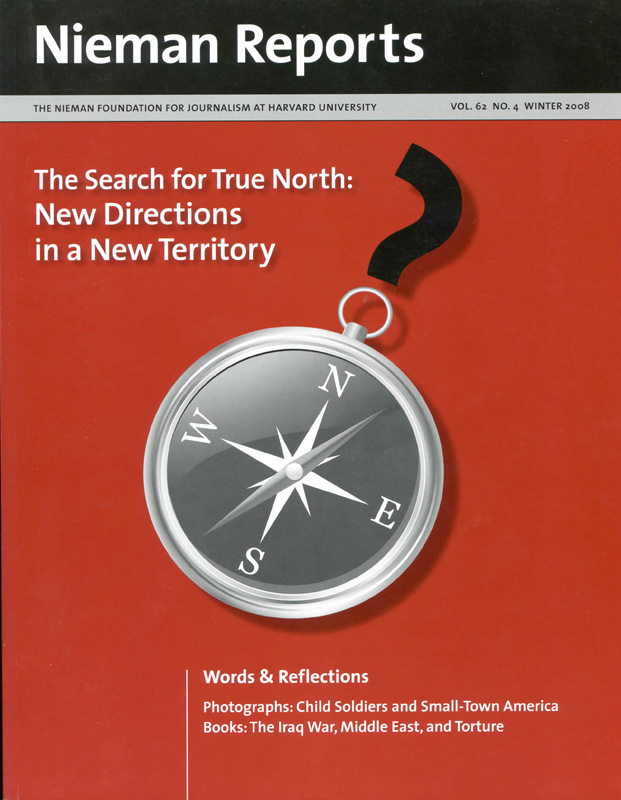
Journalists: Start your engines. The digital road awaits, and it favors those with a sturdy back and daring attitude. Don’t forget to pack the digital recorder, headphones and mic, the BlackBerry, maybe an iPhone, too, the Flip camera, and perhaps a digital camcorder. Toss in a tripod and grab an underwater case for your Flip. Who knows? The news might be a flood or fire. Then, squeeze in the notebook computer, assorted USB cables, batteries, chargers and a few flash drives. Oh yes, be sure you have the digital camera for those slideshows and, for old-times sake, throw in a few pens and a paper notebook.
Packed up. Ready to go. Now the tough part begins. Your work—once destined for print or broadcast with advertising paying your way to bring this news to eager subscribers and newsstand customers—will emerge now in search of “eyeballs” and “clicks” and with the hope of topping the “most e-mailed list.” To follow possible routes laid out on one map (below)—the vision of Dietmar Schantin, the director of IFRA’s Newsplex—is to absorb a sense of the ricocheting ride of words and images in the digital media.
Consider news as a contagious “germ”—a germ that sets in motion the viral experience of shared knowledge as it travels through the neighborhoods of social media. Links are made, comments, too, and pretty soon, an audience—the intended one or not—finds its way to the news report, takes a look, rates it, ships it off to friends, and so the cycle spins.
How all of this affects the way journalists do their work or what elements of journalism will survive this digital transformation remains a work in progress—with fewer answers than questions, with less confidence and more concerns. Business-models-in-waiting top the list of worries, even as experimentation is underway to find new ones.
We live in a time when President-Elect Barack Obama breaks news on his Web site’s newsroom blog, speaks to the nation through YouTube, and invites everyone to share ideas on change.gov. At the same time, newsrooms confront the reality of a broken business model, and journalists search for direction in this new territory as they seek to reset the bearing of what “true north” means. In this issue, neuroscientists and social media analysts, digital journalism entrepreneurs and newsroom reporters and editors, explore how the best of what journalism can be can find a home in the era of digital media.


